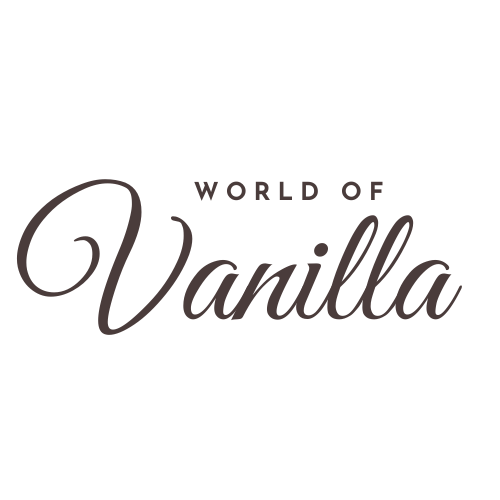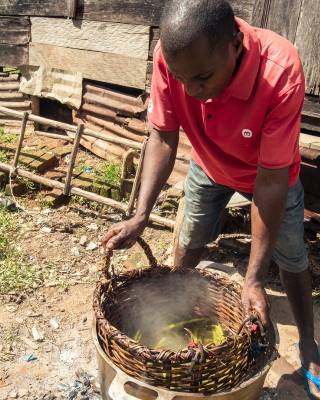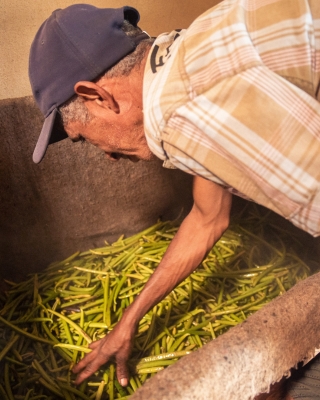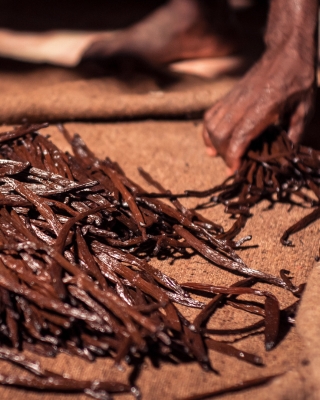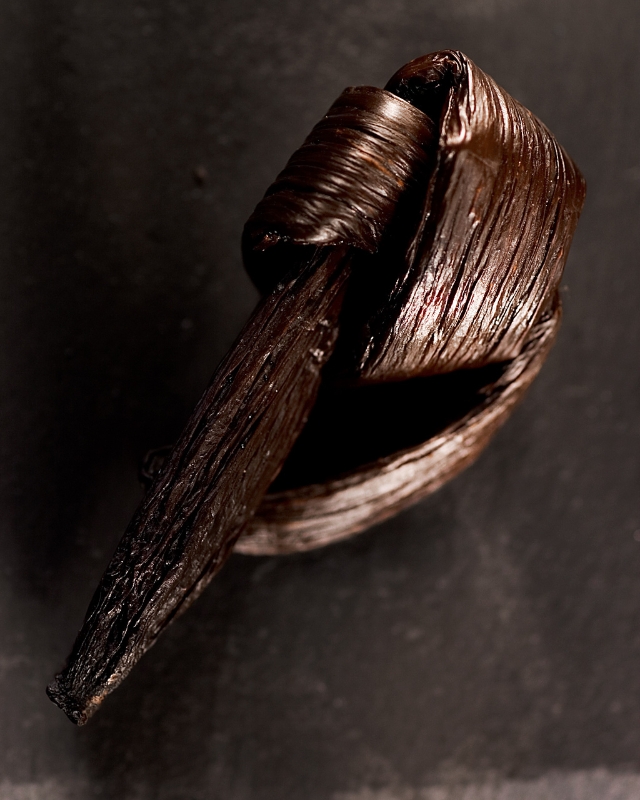Vanilla
Vanilla Flower: a delicate, essential tropical orchid
The vanilla flower, a member of the Vanilla genus, is a delicate and exotic tropical orchid. Generally white or pale yellow in color, it is distinguished by its narrow, elegant petals. The flowers grow in clusters along the plant’s stems, and each bloom is ephemeral, lasting only a single day. This orchid has a sweet, bewitching fragrance that is particularly appreciated.
Botanically, the vanilla flower has a complex structure typical of orchids, with a modified labellum serving as a platform for pollinators. Pollination is often carried out by hand, an essential technique for producing vanilla beans. The flowers are hermaphroditic, possessing both male and female organs, but require intervention to ensure pollination. After fertilization, the flower develops into long green pods which, once harvested and processed, become the famous vanilla beans.
Introducing Vanilla to the world
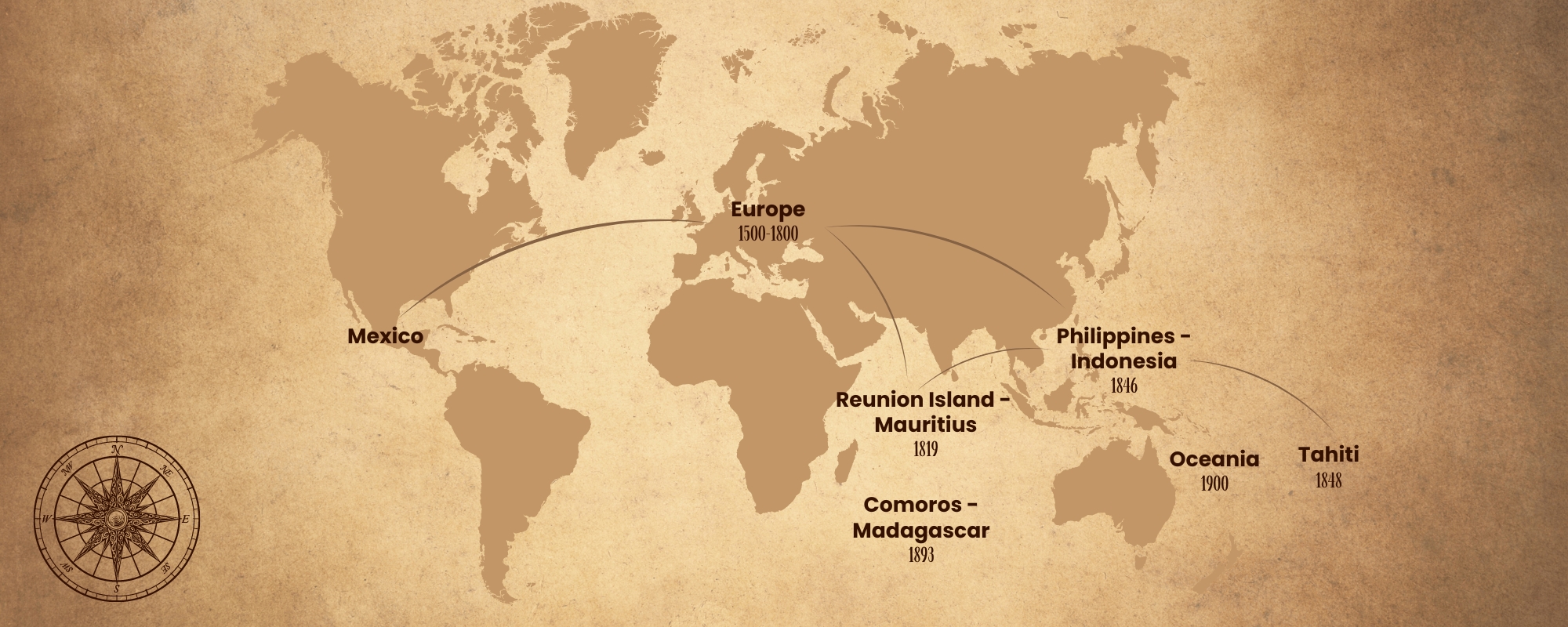
Map of current producers
Edmond Albius: The slave who revolutionized vanilla cultivation
Edmond Albius, born a slave in Sainte-Suzanne on Reunion Island in 1829, made history with his ingenious discovery that revolutionized the vanilla industry. At the age of just 12, while working on vanilla plantations, he perfected a revolutionary method of hand-pollinating vanilla flowers. At the time, vanilla cultivation posed a major challenge: vanilla flowers could not be pollinated naturally outside their native habitat in Mexico, where a particular type of bee performed this task. Without these specific pollinators present on La Réunion, attempts to grow vanilla often ended in failure. However, Edmond Albius, with his inquisitive and inventive mind, came up with a simple but effective solution. Using a thin bamboo stalk or thorn, he discovered that he could gently separate the male and female parts of vanilla flowers, then transfer the pollen from one flower to the other, enabling fertilization.
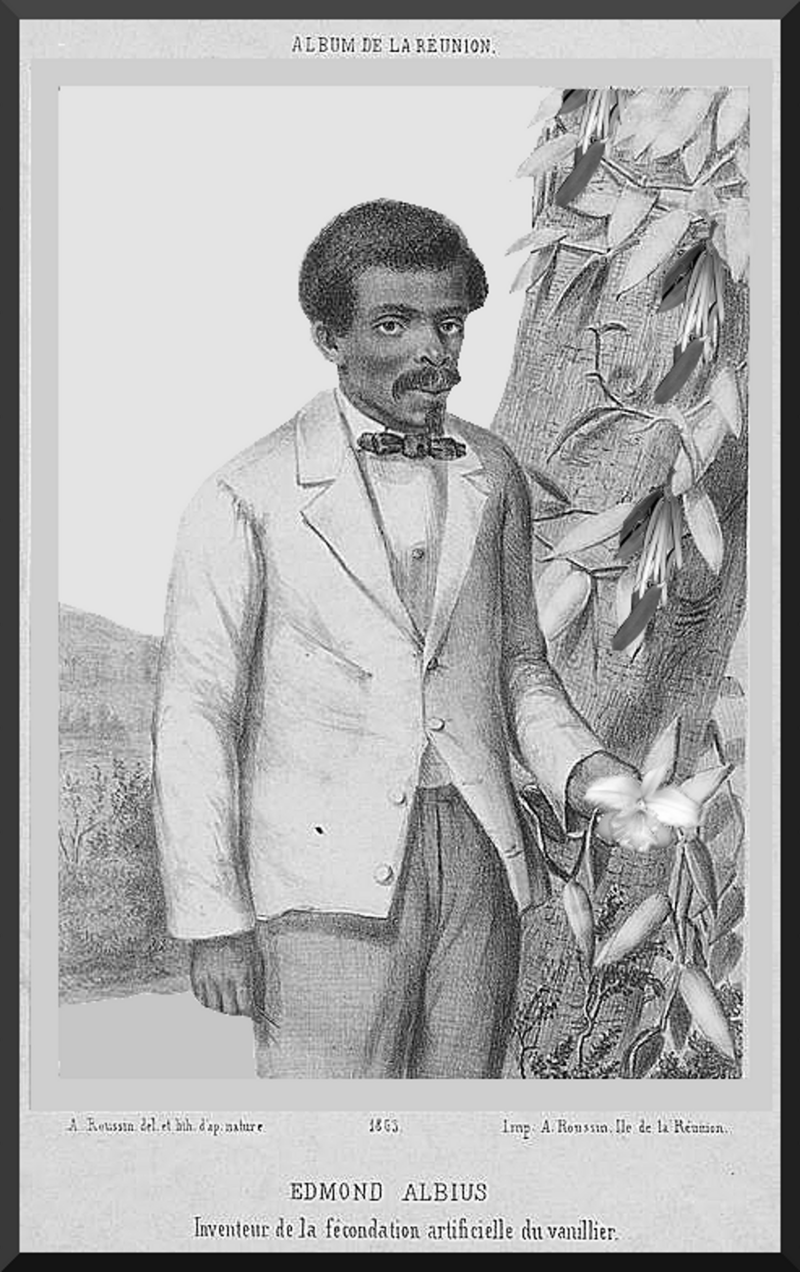
Portrait of Edmond Albius in front of vanilla vines, published in 1863 in Antoine Roussin’s Album de l’île de la Réunion.
Our production in Madagascar
Association PNM - Ambodivoara
Association PNM – Ambodivoara
Right in the heart of the SAVA Region (70% of Madagascar’s vanilla production), on the road between Sambava and Andapa, the town of AMBODIVOARA has been dedicated to vanilla cultivation for a century.
The 17 Fokontanys (administrative units) that make up the area, of which the photo below shows the central Fokontany, cultivate cash crops such as cloves, pepper and cinnamon, as well as vegetables, fruit, cereals and, above all, rice, but their income comes mainly from vanilla.
They are heirs to a long tradition of cultivation and pod preparation, as well as climatic protection (cyclones) and protection against theft.
Growers used to sell their green vanillas at July auctions, but in recent years, the share devoted to the preparation of dried, or even refined, vanillas ready for export has grown, given the uncertainty of prices and the desire to fix added value in their homes by ensuring “gourmet” quality.
They organized themselves into an Association with the aim of offering their best qualities to foreign buyers, and also to develop complementary activities in market gardening, poultry farming and fish farming.
And so it is that PNM Ambodivoara, with the help of distributor Pacifique Sud Ingrédients, now offers a range of gourmet vanillas that constitute a unique “cru” and a guarantee of origin attested by this individual hallmark which, pinched by the producer from the particular pod, guarantees its origin and specific quality.
The 430 members of the PNM Association, with an average production of 20 kilos of prepared vanilla, offer a variety of black “Gourmet” vanillas, totalling almost ten tonnes, and in particular : Vanilles Noires GOURMET from 18 to 22 cm, 35% vanillin on average, unsplit, supple and fleshy.
Bourbon vanilla manufacturing process
The 400 or so producers of the PNM Ambodivoara Association offer their pods to collectors at the state-organized markets in July, but keep a large proportion of the pods they then prepare themselves.
Quality has been prepared throughout the entire process: from the moment the pods are picked to the moment they are fully loaded with their ideal vanillin content, and at every stage of the slow drying process, which takes up to six months depending on the quality of the preparation.
Vanilla is all about flavour
Vanillin is vanilla’s main aromatic compound. It is a phenylpropanoid that gives vanilla its distinctive sweet, fragrant taste. Vanillin is found in higher concentrations in vanilla beans than in other parts of the plant.
In addition to vanillin, vanilla beans contain over 200 other aromatic compounds, including vanillic acids, alcohols, esters and phenols. These compounds work together to create the rich, complex flavor of natural vanilla.
When vanilla beans are used in cooking, they are often split to extract the tiny seeds inside. These seeds, along with the flesh of the pod itself, are rich in aromatic compounds. Sometimes, whole beans are also infused in liquids (such as milk or cream) to release even more flavor.
To recognize a good quality vanilla bean, rely on your senses:
Sight: a good vanilla pod is generally dark brown or black. It should not be gray or whitish, which may indicate poor storage or drying. Quality beans are often slightly shiny, due to the presence of natural oils. They should be plump and fleshy, indicating that they are well filled with seeds.
To the touch, a good vanilla pod is soft and flexible. It should bend without breaking. Stiff or brittle pods are often dry and of inferior quality. The pod should be slightly moist to the touch. A pod that is too dry will have lost some of its aroma.
The sense of smell: quality vanilla has a rich, complex aroma. It should smell sweet and bewitching, with notes of caramel, chocolate, tobacco or dried fruit. If the smell is faint or unpleasant, the bean is probably of poor quality.
In addition, certain vanilla origins are renowned for their exceptional quality, such as Madagascar vanilla (Bourbon), Tahitian vanilla and Mexican vanilla. Each has specific characteristics in terms of taste and aroma. The most popular vanilla varieties are vanilla planifolia and vanilla tahitensis. Price can be an indicator of quality, although it’s not always reliable. Very cheap beans are often of inferior quality. Buying from reputable sources or specialized producers can guarantee better quality.
